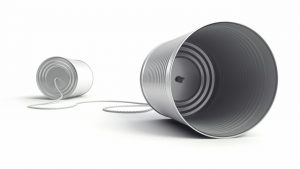 “Information and communication are often used interchangeably, but they signify quite different things. Information is giving out; communication is getting through.”– Sydney J. Harris
“Information and communication are often used interchangeably, but they signify quite different things. Information is giving out; communication is getting through.”– Sydney J. Harris
When patients ask questions or request information about their dental needs, dentists try to give answers and provide relevant information using brochures or website links. But are they effectively communicating with them? Are patients truly getting it? During my 20 years of practice, I’ve learned that success in communication is neither easy nor predictable. Each patient has a different need, personality, and variation in how they process information. To make communication with our patients more effective and relevant, we use the following approaches:
- Get to know our patients- We first try to really get to know our patients and learn about their goals, concerns, previous experiences, and what’s important to them. We ask a lot of questions to understand their personality type (generally four types of people) and the communication tools and style that works best for them. In other words, we want to know how they want to get the information and then deliver it accordingly.
- Relevant pages on our website- We have over 700 pages of content on our website! Why? Because every surgical procedure or treatment has many aspects which requires detailed explanations. This helps to bring focused answers to specific questions: the what, why, who, where, and how questions. General answers are not effective as people want a deeper understanding of their problems and available solutions.
- Success stories- People love to hear about stories of those who have gone through similar treatments. Not just before and after photos, but a description of one’s journey, how they got there, and how they felt. When they find a story relevant to their situation, it really hits home.
- Multi-media educational tools- Everyone learns differently. Some people are visual, some are auditory, some are more open to feelings of a certain experience, and others are more in-tune with technical jargon. So we have created multi-media educational tools such as videos, articles, photos, testimonials, FAQ’s, and slide shows. This way a person can get the information the way that they want and gain understanding.
- Consultations- Face-to-face meetings help patients ask questions and learn about the entire treatment process through the use of educational tools like models and photos. We allocate sufficient time to connect with each patient by listening to them and giving the information that is relevant, specific, and most importantly, heard. Yes, we ask a lot of questions too. The more we know, the better we can help patients find the right solutions.
- Written consultation letter- It is difficult for patients to recall everything discussed during a consultation. So we send them a detailed consultation letter reviewing what was discussed and recommended during their visit. We include treatment stages, who is involved with each stage, and a timeline in a clear and concise fashion.
- Testimonials and patient reviews: Reading patients’ experiences and reviews have a huge impact for those searching for the right team of dentists. They can correlate what they hear from others with the advertisement or claims made by a given practice or dentist and see if they are aligned.
- Custom visual simulation- For some patients, we use existing photos, X-rays, or dental CT-scans for simulation of dental implant therapy. This helps patients get an idea of the final appearance before the treatment is started.
- Simplicity and clarity- Communication, whether in the form of verbal, written, or other educational tools, must be simple and clear. We simplify the process so anyone can understand it. We then incorporate technical discussions, biological processes, and physiological healing processes for those who demand it.
Effective communication sets up realistic expectations, avoids confusions and surprises, and brings clarity to any process. Dentistry is no different. So next time you are handed a brochure in response to your questions, thank them for the information. Then ask for real communication.